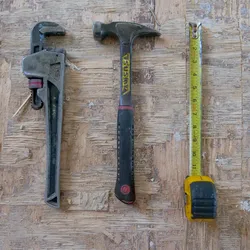
Level 1:
In America, there aren’t enough skilled workers for some jobs. People don’t want to do these jobs because they think they’re not good jobs. They think that these jobs are dirty and dangerous. But this is not true. These jobs can pay well and offer benefits. There’s also not enough training for these jobs. People need to learn how to do them. Many young people go to college instead of learning trades. This is a problem because there aren’t enough workers. It’s important to change the way people feel about these jobs so that more people will want to do them.
Level 2:
In America, there is a shortage of skilled laborers. People are not interested in these jobs because they think they are low-paying and unsafe. However, this perception is not true. Many trade jobs offer good wages, benefits, and opportunities for advancement. The lack of training programs is another reason for the shortage. Technical schools and community colleges offer trade-specific training programs, but these can be expensive. Young people are also pressured to go to four-year universities instead of learning trades. This has resulted in a significant gap in the number of young people pursuing trade jobs. It’s time to change the perception of trade jobs and recognize them as valuable and rewarding professions.
Full Story:
In recent years, the United States has faced a skilled labor shortage in a variety of industries. Despite the high demand for trade jobs, many Americans are turning down these opportunities. This article will investigate the reasons for this trend as well as its potential consequences.
Trade Job Perception: Many people believe that trade jobs are low-paying, dirty, and dangerous. This perception may lead them to pursue other, more prestigious or secure career paths. This stereotype, however, is far from accurate. Indeed, many trade jobs provide competitive pay, benefits, and advancement opportunities.
A skilled plumber or electrician, for example, can earn a six-figure salary with benefits and job security. Specialized knowledge and training are required for these jobs, which can be obtained through vocational schools or apprenticeships. Furthermore, once someone is certified in their trade, they can start their own business or work for larger corporations, increasing their earning potential even further.
Lack of Skill Training: A lack of training opportunities is another reason for the shortage of trade workers. Many schools have cut vocational education programs as the economy has shifted toward a service-based economy. As a result, a generation of young people lacks the skills required to pursue careers in the trades.
Technical schools and community colleges may offer trade-specific training programs in some cases. These programs, however, can be expensive, and students may be hesitant to incur debt in order to pursue a career in a field that is often perceived as less prestigious.
Cultural Pressure: Young people face cultural pressure to attend four-year universities and obtain white-collar jobs. This pressure is frequently applied by parents, teachers, and peers who believe that obtaining a college degree is the only way to achieve success. This makes young people believe that trade jobs are beneath them or that pursuing such a career is a failure.
As a result of this cultural pressure, there is a significant disparity in the number of young people pursuing trade jobs. The median age of construction workers is 42 years old, according to the Bureau of Labor Statistics, with only 9% of workers under the age of 25.
This pressure, however, can have disastrous consequences for those who incur significant student loan debt to attend college but then struggle to find work in their field after graduation. Trade jobs, on the other hand, can provide a stable and lucrative career path without the burden of student loans.
Finally, economic factors play an important role in the shortage of trade workers. Many construction projects were halted during the 2008 financial crisis, resulting in job losses in the industry. Due to the volatile job market, many workers were forced to leave the trade, and younger generations were discouraged from entering it.
Furthermore, the COVID-19 pandemic has highlighted the vulnerability of certain industries, particularly those that rely on skilled workers. For example, a shortage of electricians and plumbers during the pandemic has resulted in construction projects being delayed or cancelled, leaving some businesses without the resources they require to operate.
Conclusion: Despite the numerous advantages of trade jobs, there is a labor shortage in the industry. We can encourage more people to consider trade careers by addressing factors such as perception, training opportunities, cultural pressure, and economic insecurity. This will help to meet the rising demand for skilled labor while also opening up new opportunities for the next generation of workers.
Finally, the decision to pursue a career in the trades should be based on personal interests, skills, and financial objectives. While some professions require a college degree, trade jobs provide a viable career path for many Americans who want to earn a good living while working with their hands. It’s time to change the way people think about trade jobs and recognize them as valuable and rewarding careers.
Questions:
What is the perception of trade jobs in America?
How has the lack of training opportunities contributed to the shortage of skilled laborers in the US?
What is the median age of construction workers?
Do you think cultural pressure plays a significant role in discouraging young people from pursuing trade careers?
In your opinion, should vocational education programs be prioritized as much as four-year universities?
Fill In the Blanks:
valuable, advancement, rewarding, expensive, Perception, perception, shortage, benefits
In recent years, the United States has faced a skilled labor ________ in a variety of industries.
Trade Job ________: Many people believe that trade jobs are low-paying, dirty, and dangerous.
This ________ may lead them to pursue other, more prestigious or secure career paths.
Indeed, many trade jobs provide competitive pay, ________, and ________ opportunities.
These programs, however, can be ________, and students may be hesitant to incur debt in order to pursue a career in a field that is often perceived as less prestigious.
It’s time to change the way people think about trade jobs and recognize them as ________ and ________ careers.
Difficult Words:
skilled laborers - workers with specialized training or abilities
low-paying - not offering good wages
unsafe - not safe, dangerous
perception - the way something is seen or understood by people
wages - money earned for work done
benefits - non-wage compensations given to employees in addition to their normal salary or wage
advancement - the process of moving up in a job or career
shortage - a lack of something that is necessary or in demand
training programs - educational courses or classes designed to teach a particular skill or trade
technical schools - schools that focus on teaching technical and vocational skills
community colleges - institutions of higher education that offer two-year degrees, certificates, and diplomas
expensive - costing a lot of money
pressured - pushed or persuaded to do something
four-year universities - colleges or universities that offer bachelor’s degrees, which typically take four years to complete
gap - a significant difference or disparity between two things
valuable - worth a lot of money or highly prized
rewarding - providing satisfaction or fulfillment




